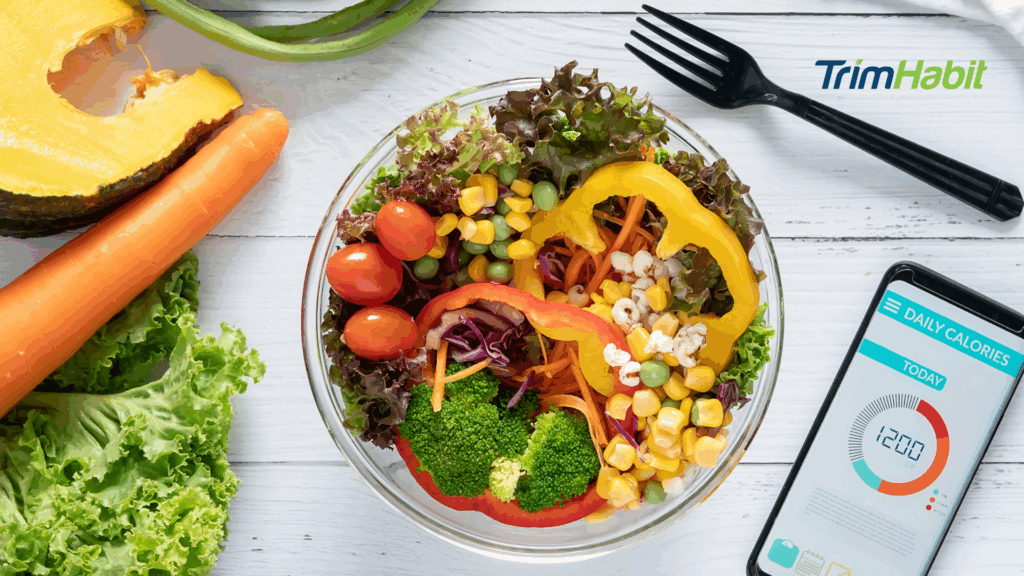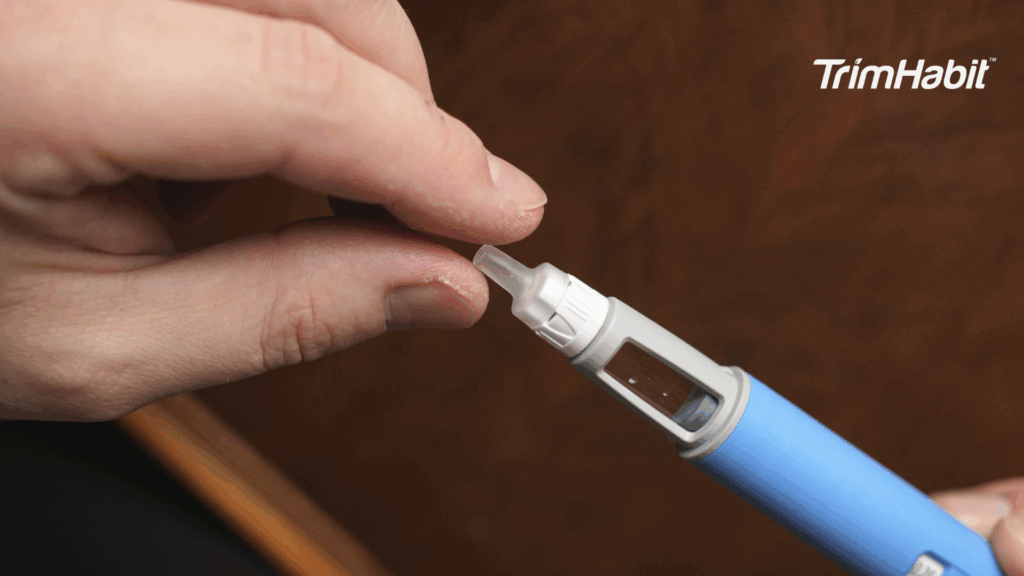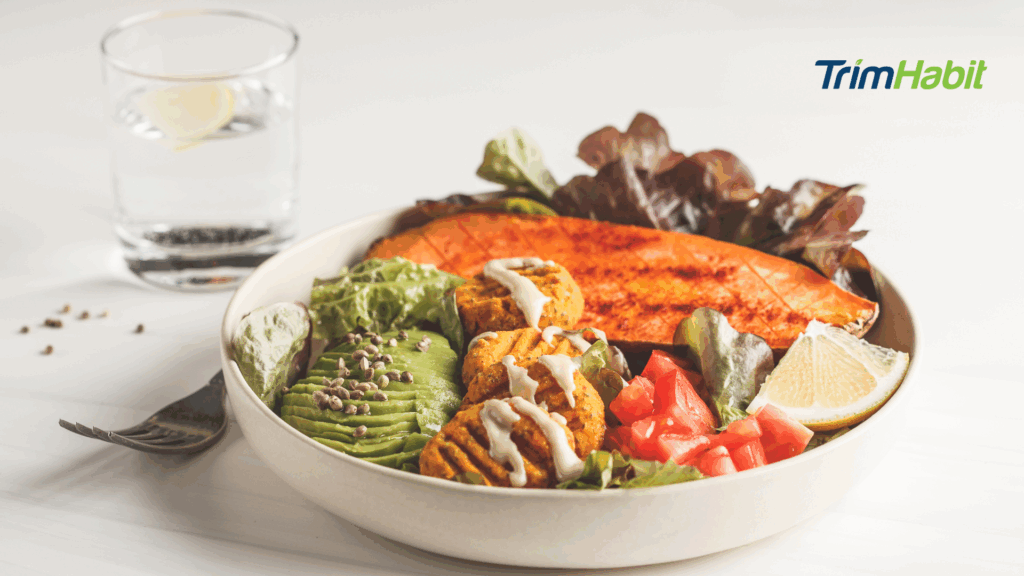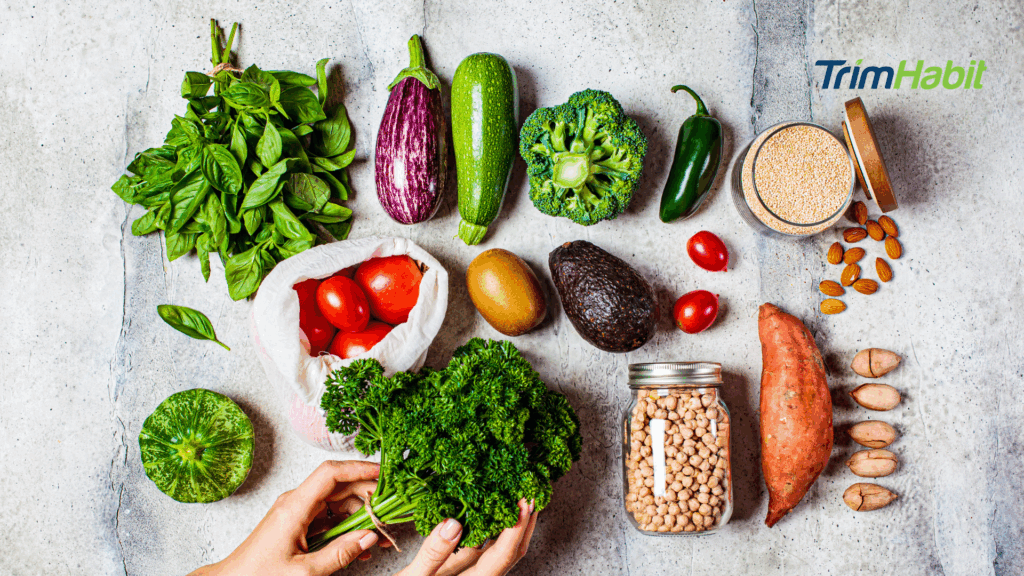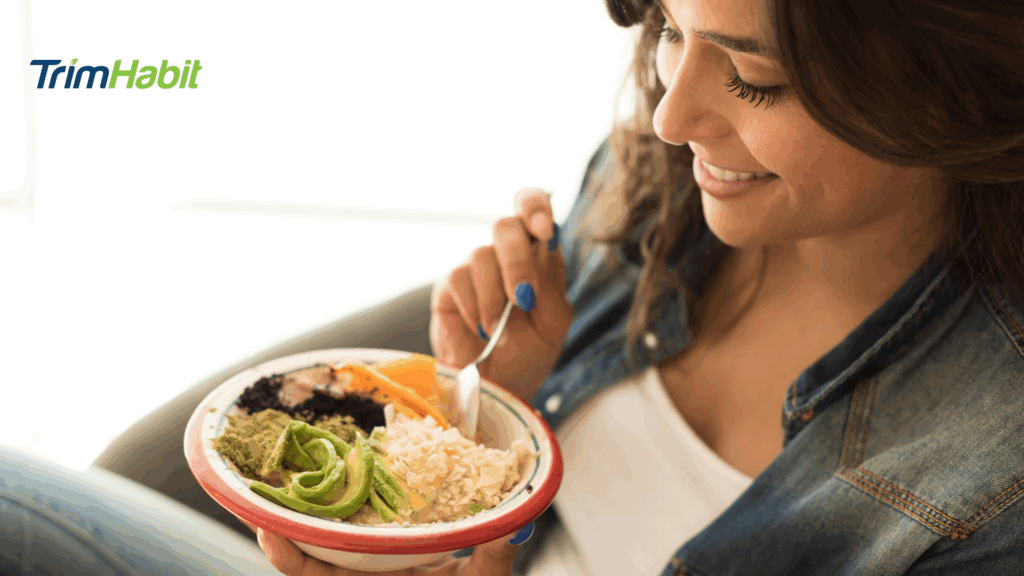Intermittent fasting emphasizes periods without food, but the quality of what you eat during eating windows is equally significant. Adding anti-inflammatory foods to your meals can support your health and complement the benefits of fasting.
This article will highlight the top anti-inflammatory foods to include in your intermittent fasting diet, their benefits, and how to enjoy them for maximum impact. Whether new to fasting or an experienced one, these foods can help you optimize your results and enhance your health.
Understanding Intermittent Fasting
Intermittent fasting is an eating pattern that alternates between periods of eating and fasting. It focuses on when you eat rather than what you eat. The practice has gained popularity for its potential health benefits, including weight management, metabolic health, and longevity1.
Common Intermittent Fasting Methods
- 16/8 Method: This involves fasting for 16 hours, eating during an 8-hour window, skipping breakfast, and eating between noon and 8 pm.
- 5:2 Method: Involves eating normally for five days a week and restricting calorie intake to 500-600 calories on the other two days.
- Eat-Stop-Eat: This involves fasting for 24 hours once or twice a week, for instance, not eating from dinner one day to dinner the next.
- Alternate-Day Fasting: Alternating between a day of eating normally and a very low-calorie intake or complete fasting.
- Warrior Diet: Involves fasting for 20 hours and eating one large meal at night.
- OMAD (One Meal a Day): Eating all daily calories in one meal and fasting for the rest of the day.
How It Works
During fasting, your body:
- Depletes glucose stores and breaks down fat for energy (lipolysis)2.
- Increases insulin sensitivity, improving metabolic health3.
- Enhances autophagy, a process where cells repair and clean up waste, potentially reducing inflammation and improving longevity4.
Potential Benefits
- Weight Loss: Promotes fat burning and reduces calorie intake5.
- Improved Metabolic Health: Lowers blood sugar and insulin levels and improves cholesterol profiles6.
- Brain Health: This may boost cognitive function and protect against neurodegenerative diseases7.
- Reduced Inflammation: Can lower markers of chronic inflammation8.
- Longevity: Studies on animals suggest it may extend lifespan9.
Considerations
Who Should Avoid It
- Pregnant or breastfeeding women.
- Individuals with a history of eating disorders.
- Those with specific medical conditions (consult a healthcare provider).
Side Effects
- Hunger, fatigue, irritability, or difficulty concentrating initially10.
- Risk of nutrient deficiencies if diet quality is poor11.
Understanding Inflammation And Its Role In Health
Inflammation is the body’s natural way of responding to injury, infection, or harmful stimuli. It is a crucial part of the immune system’s defense mechanism, designed to heal tissues and fight off pathogens. However, when inflammation becomes chronic or uncontrolled, it can contribute to various diseases and health issues12.
Types of Inflammation
Acute Inflammation
- Short-term and localized response.
- Occurs after an injury or infection.
- Symptoms: redness, swelling, heat, pain, and loss of function.
- Example: a sprained ankle or a sore throat.
Chronic Inflammation
- Long-term and systemic response.
- Persists over months or years.
- Can result from ongoing stressors like an anti-inflammatory diet, infections, or autoimmune diseases.
The Inflammatory Process
When the body detects an injury or pathogen, it releases chemical signals such as histamines, cytokines, and prostaglandins. These signals:
- Increase blood flow to the affected area.
- Recruit immune cells (like white blood cells) to fight invaders.
- Trigger repair mechanisms for damaged tissue.
Causes of Chronic Inflammation
Lifestyle Factors
- Poor diet (e.g., excessive sugar, refined carbs, trans fats)
- Lack of physical activity
- Chronic stress
- Poor sleep habits
Environmental Triggers
- Pollutants or toxins
- Smoking
- Persistent infections
Medical Conditions
- Autoimmune diseases (e.g., rheumatoid arthritis, lupus)
- Metabolic syndrome or obesity
Role in Health and Disease
While inflammation is protective in the short term against inflammatory disease, chronic inflammation can:
Damage Tissues and Organs: Prolonged immune activity may harm healthy cells13.
Contribute to Aging: Often referred to as “inflammaging.”14
Promote Disease Development
- Cardiovascular Disease: Chronic inflammation damages arteries15.
- Diabetes: Insulin resistance is linked to inflammatory markers16.
- Cancer: Inflammatory environments can promote tumor growth17.
- Neurodegenerative Diseases: Inflammation in the brain is linked to Alzheimer’s and Parkinson’s18.
Top Anti-Inflammatory Foods To Include in Your Intermittent Fasting Diet
- Fatty Fish (e.g., Salmon, Mackerel, Sardines)
- Why It’s Beneficial: Rich in omega-3 fatty acids (EPA and DHA), which help reduce inflammation by suppressing pro-inflammatory compounds19.
- Health Benefits: Supports heart health, brain function, and joint health20.
- Leafy Greens (e.g., Spinach, Kale, Swiss Chard)
- Why It’s Beneficial: Packed with antioxidants like vitamin C, vitamin E, and beta-carotene that combat oxidative stress21.
- Health Benefits: Strengthens immunity and promotes cellular repair22.
- Berries (e.g., Blueberries, Strawberries, Raspberries)
- Why They’re Beneficial: They contain anthocyanins, powerful antioxidants that reduce inflammation and support cellular health23.
- Health Benefits: Improve gut health and lower the risk of chronic diseases like heart disease and diabetes24.
- Turmeric
- Why It’s Beneficial: Contains curcumin, one of the most potent natural anti-inflammatory compounds25.
- Health Benefits: Helps reduce joint pain, improves digestion, and enhances brain function26.
- Tip: Combine with black pepper to increase curcumin absorption.
- Nuts and Seeds (e.g., Walnuts, Chia Seeds, Flaxseeds)
- Why They’re Beneficial: Loaded with healthy fats, fiber, and polyphenols, which reduce inflammation and oxidative stress27.
- Health Benefits: Support cardiovascular health and improve digestion28.
- Olive Oil (Extra Virgin)
- Why It’s Beneficial: It contains oleocanthal, a compound with effects similar to anti-inflammatory medications like ibuprofen29.
- Health Benefits: Promotes heart health and may lower the risk of inflammatory conditions like arthritis30.
- Ginger
- Why It’s Beneficial: Contains gingerol, a bioactive compound with anti-inflammatory and antioxidant effects31.
- Health Benefits: Reduces muscle soreness, aids digestion, and helps combat chronic inflammation32.
- Green Tea
- Why It’s Beneficial: High in EGCG (epigallocatechin gallate), a potent antioxidant that helps reduce inflammation33.
- Health Benefits: Supports brain function, heart health, and metabolic health34.
- Fermented Foods (e.g., Kimchi, Sauerkraut, Yogurt)
- Why They’re Beneficial: Rich in probiotics that promote a healthy gut microbiome, a key factor in regulating systemic inflammation35.
- Health Benefits: Improve digestion, boost immunity, and reduce the risk of chronic inflammation-related diseases36.
- Dark Chocolate (70% Cocoa or Higher)
- Why It’s Beneficial: Contains flavonoids, antioxidants that reduce inflammation and protect cells from oxidative damage37.
- Health Benefits: Improves mood, heart health, and insulin sensitivity38.
- Tip: Enjoy in moderation to avoid excess sugar.
How To Incorporate Anti-Inflammatory Foods Into Your Eating Windows
Incorporating anti-inflammatory foods into your eating windows can be easy and enjoyable, especially if you’re practicing a structured anti-inflammatory diet like intermittent fasting. Here’s how you can take certain foods and include them across meals:
During Your Eating Window
Break Your Fast with a Nutrient-Dense Meal
Example: A smoothie with spinach, blueberries, flaxseeds, and almond milk. Add a small piece of dark chocolate or a teaspoon of turmeric for extra anti-inflammatory benefits.
Why: These foods provide antioxidants, fiber, and healthy fats to replenish your body after fasting.
Include Healthy Fats in Your Meals
Example: Use extra virgin olive oil for salads or as a drizzle over roasted vegetables. Add fatty fish like salmon to your meal for omega-3s.
Why: Healthy fats reduce inflammation and support brain and heart health.
Snack Wisely
Example: Munch on a handful of walnuts, almonds, or chia pudding.
Why: These options are nutrient-dense, providing anti-inflammatory properties without spiking blood sugar.
Enjoy a Balanced Dinner
Example: Grilled mackerel with a side of quinoa and sautéed kale. Add fermented foods like kimchi or sauerkraut.
Why: Combining proteins, whole grains, and probiotics ensures a well-rounded anti-inflammatory eating plan.
Between Meals or as Beverages
Green Tea or Turmeric Tea
When: Between meals or as part of your fasting-friendly drinks.
Why: Green tea provides EGCG, and turmeric tea reduces inflammation while hydrating you.
Ginger Infusion
When: Add fresh ginger slices to hot water for a warming, anti-inflammatory drink during or after your eating window.
Quick Tips for Meal Prep
Batch Cooking: Grill or bake fatty fish, prepare quinoa, and chop leafy greens ahead of time. Store them for quick meals.
Superfood Additions: Sprinkle chia seeds, flaxseeds, or walnuts onto oatmeal, yogurt, or salads.
Flavor Boosters: Use turmeric, ginger, garlic, and olive oil as staple ingredients in your dishes.
Citations
1 Shalabi H, Hassan AS 4th, Al-Zahrani FA, Alarbeidi AH, Mesawa M, Rizk H, Aljubayri AA. Intermittent Fasting: Benefits, Side Effects, Quality of Life, and Knowledge of the Saudi Population. Cureus. 2023 Feb 7;15(2):e34722. doi: 10.7759/cureus.34722. PMID: 36909028; PMCID: PMC9998115.
2 Edwards M, Mohiuddin SS. Biochemistry, Lipolysis. [Updated 2023 Jul 17]. In: StatPearls [Internet]. Treasure Island (FL): StatPearls Publishing; 2024 Jan-. Available from: https://www.ncbi.nlm.nih.gov/books/NBK560564/
3 Clamp LD, Hume DJ, Lambert EV, Kroff J. Enhanced insulin sensitivity in successful, long-term weight loss maintainers compared with matched controls with no weight loss history. Nutr Diabetes. 2017 Jun 19;7(6):e282. doi: 10.1038/nutd.2017.31. PMID: 28628125; PMCID: PMC5519190.
4 Shabkhizan R, Haiaty S, Moslehian MS, Bazmani A, Sadeghsoltani F, Saghaei Bagheri H, Rahbarghazi R, Sakhinia E. The Beneficial and Adverse Effects of Autophagic Response to Caloric Restriction and Fasting. Adv Nutr. 2023 Sep;14(5):1211-1225. doi: 10.1016/j.advnut.2023.07.006. Epub 2023 Jul 30. PMID: 37527766; PMCID: PMC10509423.
5 Institute of Medicine (US) Subcommittee on Military Weight Management. Weight Management: State of the Science and Opportunities for Military Programs. Washington (DC): National Academies Press (US); 2004. 4, Weight-Loss and Maintenance Strategies. Available from: https://www.ncbi.nlm.nih.gov/books/NBK221839/
6 Järvi AE, Karlström BE, Granfeldt YE, Björck IE, Asp NG, Vessby BO. Improved glycemic control and lipid profile and normalized fibrinolytic activity on a low-glycemic index diet in type 2 diabetic patients. Diabetes Care. 1999 Jan;22(1):10-8. doi: 10.2337/diacare.22.1.10. PMID: 10333897.
7 Wang Y, Pan Y, Li H. What is brain health and why is it important? BMJ. 2020 Oct 9;371:m3683. doi: 10.1136/bmj.m3683. PMID: 33037002; PMCID: PMC7555053.
8 Pahwa R, Goyal A, Jialal I. Chronic Inflammation. [Updated 2023 Aug 7]. In: StatPearls [Internet]. Treasure Island (FL): StatPearls Publishing; 2024 Jan-. Available from: https://www.ncbi.nlm.nih.gov/books/NBK493173/
9 Bene M, Salmon AB. Testing the evidence that lifespan-extending compound interventions are conserved across laboratory animal model species. Geroscience. 2023 Jun;45(3):1401-1409. doi: 10.1007/s11357-022-00722-0. Epub 2023 Jan 13. PMID: 36637786; PMCID: PMC10400519.
10 National Collaborating Centre for Mental Health (UK). Common Mental Health Disorders: Identification and Pathways to Care. Leicester (UK): British Psychological Society (UK); 2011. (NICE Clinical Guidelines, No. 123.) 2, COMMON MENTAL HEALTH DISORDERS. Available from: https://www.ncbi.nlm.nih.gov/books/NBK92254/
11 Kiani AK, Dhuli K, Donato K, Aquilanti B, Velluti V, Matera G, Iaconelli A, Connelly ST, Bellinato F, Gisondi P, Bertelli M. Main nutritional deficiencies. J Prev Med Hyg. 2022 Oct 17;63(2 Suppl 3):E93-E101. doi: 10.15167/2421-4248/jpmh2022.63.2S3.2752. PMID: 36479498; PMCID: PMC9710417.
12 Pahwa R, Goyal A, Jialal I. Chronic Inflammation. [Updated 2023 Aug 7]. In: StatPearls [Internet]. Treasure Island (FL): StatPearls Publishing; 2024 Jan-. Available from: https://www.ncbi.nlm.nih.gov/books/NBK493173/
13 Nash AA, Dalziel RG, Fitzgerald JR. Mechanisms of Cell and Tissue Damage. Mims’ Pathogenesis of Infectious Disease. 2015:171–231. doi: 10.1016/B978-0-12-397188-3.00008-1. Epub 2015 Feb 6. PMCID: PMC7158287.
14 Ferrucci L, Fabbri E. Inflammageing: chronic inflammation in ageing, cardiovascular disease, and frailty. Nat Rev Cardiol. 2018 Sep;15(9):505-522. doi: 10.1038/s41569-018-0064-2. PMID: 30065258; PMCID: PMC6146930.
15 Henein MY, Vancheri S, Longo G, Vancheri F. The Role of Inflammation in Cardiovascular Disease. Int J Mol Sci. 2022 Oct 26;23(21):12906. doi: 10.3390/ijms232112906. PMID: 36361701; PMCID: PMC9658900.
16 Fizelova M, Jauhiainen R, Kangas AJ, Soininen P, Ala-Korpela M, Kuusisto J, Laakso M, Stancáková A. Differential Associations of Inflammatory Markers With Insulin Sensitivity and Secretion: The Prospective METSIM Study. J Clin Endocrinol Metab. 2017 Sep 1;102(9):3600-3609. doi: 10.1210/jc.2017-01057. PMID: 28911155; PMCID: PMC5587063.
17 Greten FR, Grivennikov SI. Inflammation and Cancer: Triggers, Mechanisms, and Consequences. Immunity. 2019 Jul 16;51(1):27-41. doi: 10.1016/j.immuni.2019.06.025. PMID: 31315034; PMCID: PMC6831096.
18 Amor S, Puentes F, Baker D, van der Valk P. Inflammation in neurodegenerative diseases. Immunology. 2010 Feb;129(2):154-69. doi: 10.1111/j.1365-2567.2009.03225.x. PMID: 20561356; PMCID: PMC2814458.
19 Zivkovic AM, Telis N, German JB, Hammock BD. Dietary omega-3 fatty acids aid in the modulation of inflammation and metabolic health. Calif Agric (Berkeley). 2011 Jul;65(3):106-111. doi: 10.3733/ca.v065n03p106. PMID: 24860193; PMCID: PMC4030645.
20 Horrocks LA, Yeo YK. Health benefits of docosahexaenoic acid (DHA). Pharmacol Res. 1999 Sep;40(3):211-25. doi: 10.1006/phrs.1999.0495. PMID: 10479465.
21 Traber MG, Stevens JF. Vitamins C and E: beneficial effects from a mechanistic perspective. Free Radic Biol Med. 2011 Sep 1;51(5):1000-13. doi: 10.1016/j.freeradbiomed.2011.05.017. Epub 2011 May 25. PMID: 21664268; PMCID: PMC3156342.
22 Iddir M, Brito A, Dingeo G, Fernandez Del Campo SS, Samouda H, La Frano MR, Bohn T. Strengthening the Immune System and Reducing Inflammation and Oxidative Stress through Diet and Nutrition: Considerations during the COVID-19 Crisis. Nutrients. 2020 May 27;12(6):1562. doi: 10.3390/nu12061562. PMID: 32471251; PMCID: PMC7352291.
23 Khoo HE, Azlan A, Tang ST, Lim SM. Anthocyanidins and anthocyanins: colored pigments as food, pharmaceutical ingredients, and the potential health benefits. Food Nutr Res. 2017 Aug 13;61(1):1361779. doi: 10.1080/16546628.2017.1361779. PMID: 28970777; PMCID: PMC5613902.
24 Aziz T, Hussain N, Hameed Z, Lin L. Elucidating the role of diet in maintaining gut health to reduce the risk of obesity, cardiovascular and other age-related inflammatory diseases: recent challenges and future recommendations. Gut Microbes. 2024 Jan-Dec;16(1):2297864. doi: 10.1080/19490976.2023.2297864. Epub 2024 Jan 4. PMID: 38174551; PMCID: PMC10773664.
25 Peng Y, Ao M, Dong B, Jiang Y, Yu L, Chen Z, Hu C, Xu R. Anti-Inflammatory Effects of Curcumin in the Inflammatory Diseases: Status, Limitations and Countermeasures. Drug Des Devel Ther. 2021 Nov 2;15:4503-4525. doi: 10.2147/DDDT.S327378. PMID: 34754179; PMCID: PMC8572027.
26 Bode AM, Dong Z. The Amazing and Mighty Ginger. In: Benzie IFF, Wachtel-Galor S, editors. Herbal Medicine: Biomolecular and Clinical Aspects. 2nd edition. Boca Raton (FL): CRC Press/Taylor & Francis; 2011. Chapter 7. Available from: https://www.ncbi.nlm.nih.gov/books/NBK92775/
27 Khalid W, Arshad MS, Aziz A, Rahim MA, Qaisrani TB, Afzal F, Ali A, Ranjha MMAN, Khalid MZ, Anjum FM. Chia seeds (Salvia hispanica L.): A therapeutic weapon in metabolic disorders. Food Sci Nutr. 2022 Dec 15;11(1):3-16. doi: 10.1002/fsn3.3035. PMID: 36655089; PMCID: PMC9834868.
28 Sara Motyka, Ewa Skała, Halina Ekiert, Agnieszka Szopa, Health-promoting approaches of the use of chia seeds, Journal of Functional Foods, Volume 103, 2023, 105480, ISSN 1756-4646, https://doi.org/10.1016/j.jff.2023.105480 (https://www.sciencedirect.com/science/article/pii/S1756464623000804)
29 Parkinson L, Keast R. Oleocanthal, a phenolic derived from virgin olive oil: a review of the beneficial effects on inflammatory disease. Int J Mol Sci. 2014 Jul 11;15(7):12323-34. doi: 10.3390/ijms150712323. PMID: 25019344; PMCID: PMC4139846.
30 Lucas L, Russell A, Keast R. Molecular mechanisms of inflammation. Anti-inflammatory benefits of virgin olive oil and the phenolic compound oleocanthal. Curr Pharm Des. 2011;17(8):754-68. doi: 10.2174/138161211795428911. PMID: 21443487.
31 Mao QQ, Xu XY, Cao SY, Gan RY, Corke H, Beta T, Li HB. Bioactive Compounds and Bioactivities of Ginger (Zingiber officinale Roscoe). Foods. 2019 May 30;8(6):185. doi: 10.3390/foods8060185. PMID: 31151279; PMCID: PMC6616534.
32 Mashhadi NS, Ghiasvand R, Askari G, Hariri M, Darvishi L, Mofid MR. Anti-oxidative and anti-inflammatory effects of ginger in health and physical activity: review of current evidence. Int J Prev Med. 2013 Apr;4(Suppl 1):S36-42. PMID: 23717767; PMCID: PMC3665023.
33 Mokra D, Joskova M, Mokry J. Therapeutic Effects of Green Tea Polyphenol (‒)-Epigallocatechin-3-Gallate (EGCG) in Relation to Molecular Pathways Controlling Inflammation, Oxidative Stress, and Apoptosis. Int J Mol Sci. 2022 Dec 25;24(1):340. doi: 10.3390/ijms24010340. PMID: 36613784; PMCID: PMC9820274.
34 Chacko SM, Thambi PT, Kuttan R, Nishigaki I. Beneficial effects of green tea: a literature review. Chin Med. 2010 Apr 6;5:13. doi: 10.1186/1749-8546-5-13. PMID: 20370896; PMCID: PMC2855614.
35 Hemarajata P, Versalovic J. Effects of probiotics on gut microbiota: mechanisms of intestinal immunomodulation and neuromodulation. Therap Adv Gastroenterol. 2013 Jan;6(1):39-51. doi: 10.1177/1756283X12459294. PMID: 23320049; PMCID: PMC3539293.
36 Wang X, Zhang P, Zhang X. Probiotics Regulate Gut Microbiota: An Effective Method to Improve Immunity. Molecules. 2021 Oct 8;26(19):6076. doi: 10.3390/molecules26196076. PMID: 34641619; PMCID: PMC8512487.
37 Ullah A, Munir S, Badshah SL, Khan N, Ghani L, Poulson BG, Emwas AH, Jaremko M. Important Flavonoids and Their Role as a Therapeutic Agent. Molecules. 2020 Nov 11;25(22):5243. doi: 10.3390/molecules25225243. PMID: 33187049; PMCID: PMC7697716.
38 Zahra M, Abrahamse H, George BP. Flavonoids: Antioxidant Powerhouses and Their Role in Nanomedicine. Antioxidants (Basel). 2024 Jul 29;13(8):922. doi: 10.3390/antiox13080922. PMID: 39199168; PMCID: PMC11351814.




